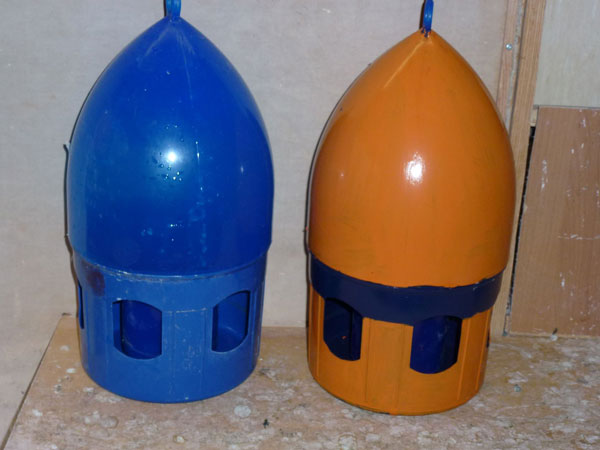Good Water? Bad Water?
Our drinking water (tap water) can be tasty for some of us humans. Animals have another opinion there. Just three examples: When I was working with the hippos in the Zoo I noticed that they drank almost no water during the night inside. When they came to the bath in the morning they drank a lot of it. That they had done their business in there the day before didn't bother them. When we took our dog for extended walks lasting several hours and offered him water during breaks he often didn't want it, even if the weather was warm. If we crossed a muddy puddle he lapped it up. Now regarding the pigeons. When it's raining my pigeons always go to the aviary and suck at the water drops under the rods, although there is a water trough with fresh clear water in the aviary.
Since the tap water is usually not clear source water, but purified sterile water, usually done with chlorine, this is probably the reason that the animals only drink that water so they do not die of thirst. I know pigeon breeders that have their own water source or gather rain water. Unfortunately I don't belong to these lucky ones. I asked myself how to improve the water naturally, so it would taste better to the pigeons. I added a spoonful of humus in 2L of tap water and mixed it well. I take the humus from molehills. I take care to take it from different kinds of earth which are a long way apart (several km). Since there are different trace elements in the earth and not every earth has the same ones. This brown broth is drunk by the pigeons.
Now I was interested in knowing which water they preferred to drink. I could only find out by offering them two different drinking troughs, one with tap water = HW. and one with water mixed with humus = TW. for a duration of 41 days. One drinking trough was blue and the other one was orange, in the orange one there was always TW.

The two drinking troughs.
In both there was always 2L of water added, which was renewed every 2 days. I have always measured the remaining water in both drinking troughs, in that way I could see exactly which water they preferred. In the pigeonry with the experiment there were 22 female pigeons (16 flying calottes and 6 italian owls) housed. I assume that the male pigeons would prefer the same water.
Experiment
On the 26.10.2021. I started with the experiment.
28.10. the water was drunk as follows. HW. 4,0 dl. TW. 10.0 dl.
30.10. HW. 4.0 dl. / TW. 8.5 dl.
1.11. HW. 5,0 dl./ TH. 9,5 dl.
3.11. HW. 4.5 dl. / TW. 7.0 dl.
3.11. 9 flying calottes were brought into the aviary, so there were 13 female pigeons left for the experiment.
5.11. HW. 2,0 dl. / TW. 6.0 dl.
7.11. HW. 4,0 dl. / TW. 4,0 dl.
7.11. There are 12 pigeons left.
9.11. HW. 2,5 dl. / TW. 3.5 dl.
11.11. HW. 2,5 dl. / TW. 4.0 dl.
13.11. HW. 3,0 dl. / TW. 4.0 dl.
15.11. HW. 3.0 dl. / TW. 3.5 dl.
17.11. HW. 2,5 dl. / TW. 4.5 dl.
18.11. There are 20 pigeons.
19.11. HW. 3,5 dl. / TW. 6.0 dl.
21.11. HW. 3.5 dl. / TW. 6.5 dl.
23.11. HW. 4.0 dl. / TW. 7.0 dl.
25.11. HW. 3.5 dl. / TW. 7.5 dl.
25.11. The drinking troughs were exchanged. In the blue one TW. was added and in the orange one HW. The placing of the drinking troughs was also changed. Where the blue one stood the orange one was placed and vice versa. (The two drinking troughs stood around 40cm apart from each other) .
27.11. HW. 5.0 dl. / TW. 6.0 dl.
29.11. HW. 4.5 dl. / TW. 6.0 dl.
1.12. HW. 5.0 dl. / TW. 6.0 dl.
3. 12. HW. 4.5 dl. / TW. 7.5 dl.
5.12. WH. 3.5 dl. / TW. 7.0 dl.
Result. This experiment has shown that the majority of the pigeons prefer the water with humus TW. It is to be noted that there were higher day temperatures at the beginning compared to the end. This could be a reason why more water was drunk in the beginning.
Another observation in this experiment, which was more intuitive: the Italian owls were often the first ones to drink and they often went to HW to drink.
Since this experiment I give all my pigeons TW.
Walter Stettler CH Binningen www.flugtippler.ch